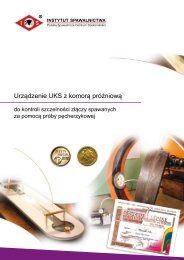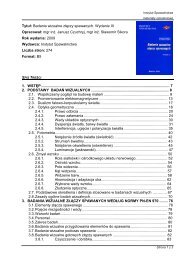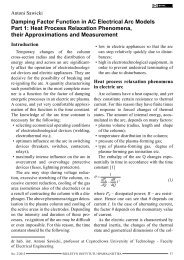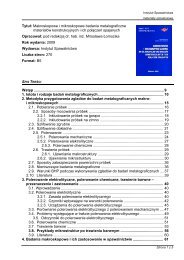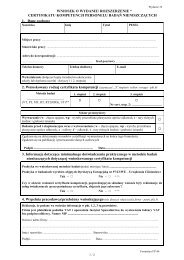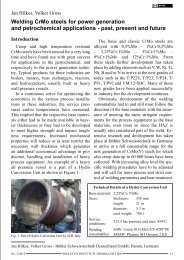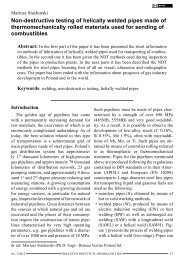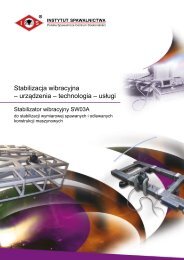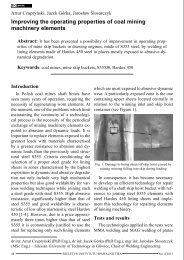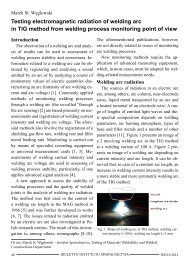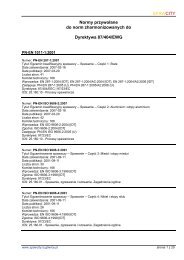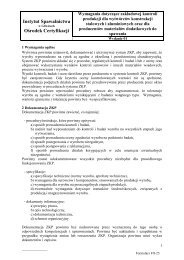Biuletyn Instytutu Spawalnictwa No. 01/2012
Biuletyn Instytutu Spawalnictwa No. 01/2012
Biuletyn Instytutu Spawalnictwa No. 01/2012
Create successful ePaper yourself
Turn your PDF publications into a flip-book with our unique Google optimized e-Paper software.
Fig. 4. Course of changes in current and voltage during surfacing of zinc-coated<br />
plate using DW 300. Maximum EN ratio<br />
Fig. 5. Course of changes in current and voltage in function of time, recorded<br />
during surfacing of zinc-coated plate using Qineo Champ 450. Neutral setting of<br />
EN ratio<br />
Fig. 6. Course of changes in current and voltage in function of time, recorded<br />
during surfacing of zinc-coated plate using Qineo Champ 450. Maximum EN<br />
ratio<br />
Results obtained through the recording of<br />
electrical parameters during surfacing confirmed<br />
that current intensity and arc voltage indeed<br />
alter their polarity. A time-related course<br />
of welding current revealed<br />
two components of the EN<br />
ratio i.e. basic current and<br />
pulse current. Basic current<br />
maintains an arc during the<br />
change of voltage polarity;<br />
a negative pulse controls a<br />
drop of liquid filler metal.<br />
Reference publications indicate<br />
that this process takes<br />
place only for ratio values<br />
exceeding 30%; otherwise,<br />
the change of polarity may<br />
destabilise an arc [7]. As<br />
the EN ratio setting is nondimensional<br />
in the case of<br />
both devices, it is not possible<br />
to directly determine<br />
the percentage of EN ratio<br />
in the course of welding current<br />
intensity and arc voltage<br />
(works on this topic are<br />
underway). During the test<br />
it was possible to observe<br />
that there was no EN (electrode<br />
negative) for a setting<br />
ensuring the minimum EN<br />
ratio for the Qineo Champ<br />
device (Fig. 7). In the above<br />
case, the course of current is<br />
characteristic of a classical<br />
pulsed arc welding.<br />
During the recording of<br />
parameters it was possible<br />
to observe that a change of<br />
EN ratio significantly affects<br />
the course of a welding<br />
process and the appearance of padding welds.<br />
For this reason, the next stage involved technological<br />
tests of welding and surfacing with<br />
various settings of the parameter (i.e. course<br />
NR <strong>01</strong>/2<strong>01</strong>2<br />
BIULETYN INSTYTUTU SPAWALNICTWA<br />
35



